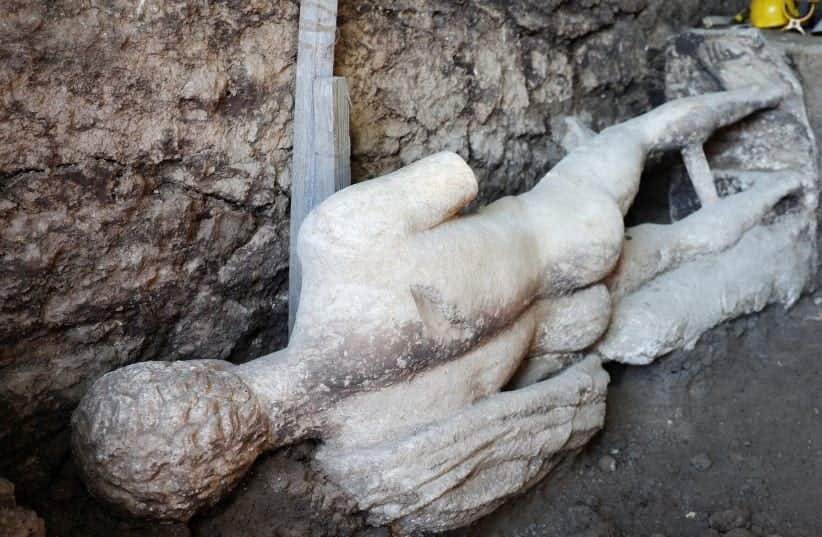Historical wonder: 2,500 year-old statue of Greek god Hermes unearthed in Bulgaria
Archaeologists near Bulgaria’s southeastern border with Greece made an unexpected discovery this week: a nearly 7-foot statue of the ancient Greek god Hermes.

A nearly 7-foot statue of the ancient Greek god Hermes was found during the excavation of an ancient Roman sewer in the abandoned city of Heraclea Sintica. (CREDIT: Reuters)
Archaeologists near Bulgaria's southeastern border with Greece made an unexpected discovery this week: a nearly 7-foot statue of the ancient Greek god Hermes. The statue was found during the excavation of an ancient Roman sewer in the abandoned city of Heraclea Sintica, which was established by King Philip II of Macedon between 356 and 339 BC.
Heraclea Sintica suffered extensive damage from a powerful earthquake around 425 AD, which destroyed much of the city’s infrastructure, including the civic basilica, and caused the nearby Strumeshnitsa River to flood the forum. By 457 AD, groups had returned to live in the ruins, but permanent habitation had ceased by 500 AD.
The Hermes statue is in “very good condition,” according to lead archaeologist Lyudmil Vagalinski. “Its head is preserved,” he noted, adding that the marble statue had been placed in the sewer and covered with dirt, possibly as Christianity became the official religion of the Roman Empire and pagan symbols were banned. The statue is a Roman copy of an ancient Greek original. “Everything pagan was forbidden, and they have joined the new ideology,” Vagalinski explained, “but apparently they took care of their old deities.”
Archaeological excavations at Heraclea Sintica have been ongoing since 2007, led by Vagalinski of the National Institute with Museum of Archaeology in Sofia. The team noticed unusual structures, such as tunnels and an arch, above the site. Geosonar examination by Russian specialists later revealed a large studio for producing ceramic masks, likely for an unknown ancient theatre.
Hermes, in ancient Greek mythology, is known as the herald of the gods. He is the protector of travelers, as well as thieves and liars, and guides souls to the underworld. He is also considered the god of thieves due to his cunning and insight. Initially associated with the underworld, Hermes was worshiped as “the god of the way between the lower and upper world.” His role expanded to include roads, borders, travelers, sailors, and commerce.
Hermes was born to Zeus and Maia, daughter of the titan Atlas and one of the Pleiades. According to legend, he was born on Mount Cilene in Arcadia, although some traditions claim his birth took place on Mount Olympus. Hermes’ primary role in Greek mythology is as the messenger of the gods, known for his eloquence and ability to achieve desired outcomes through his speech. As a result, the tongues of sacrificed animals were commonly offered to him.
Hermes was also the god of prudence and skill in all social exchanges. He represented deception and the uncertain, guiding souls to the afterlife. Renowned for his dexterity and grace, Hermes executed his duties with remarkable skill.
The discovery of the Hermes statue adds to the understanding of Heraclea Sintica's history and the persistence of pagan symbols even as new religious ideologies took hold. The ongoing excavations continue to reveal the complex layers of history in this ancient city.
Note: Materials provided above by the The Brighter Side of News. Content may be edited for style and length.
Like these kind of feel good stories? Get the Brighter Side of News' newsletter.



